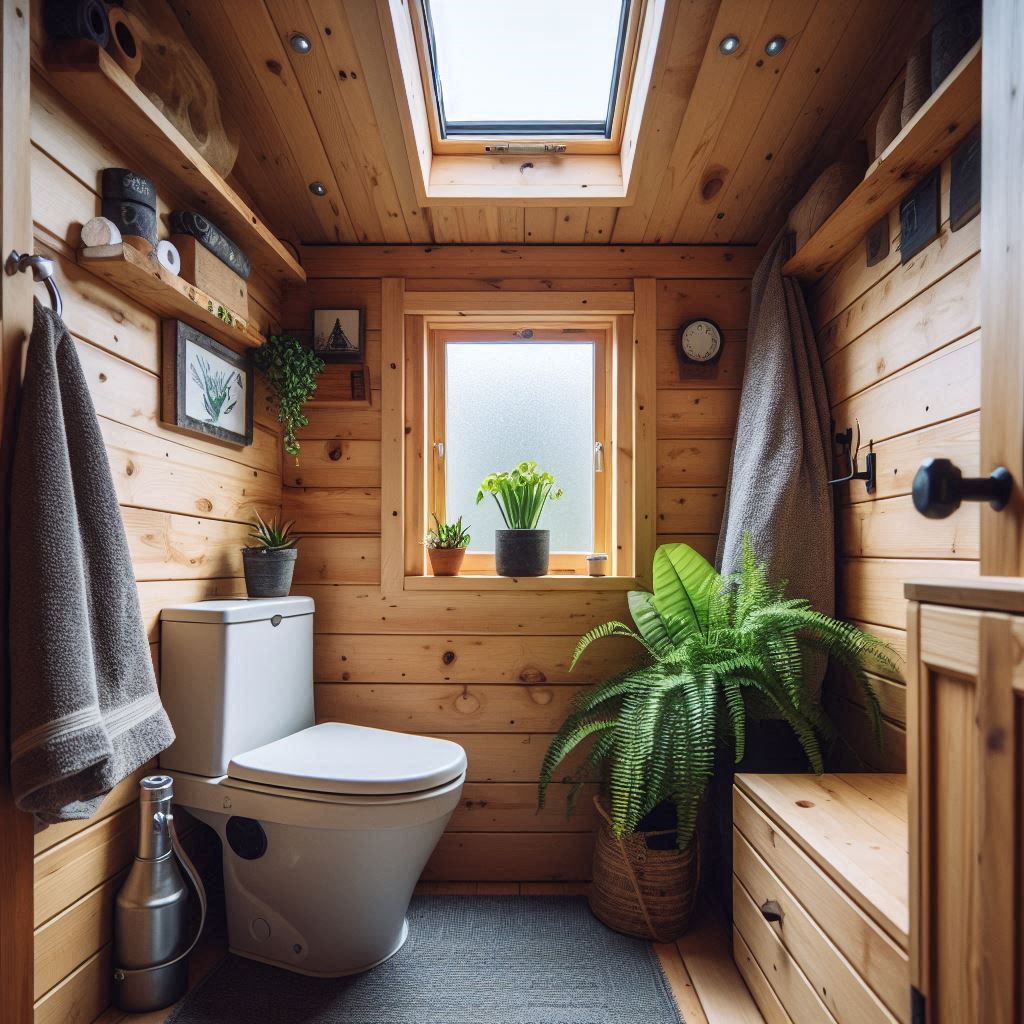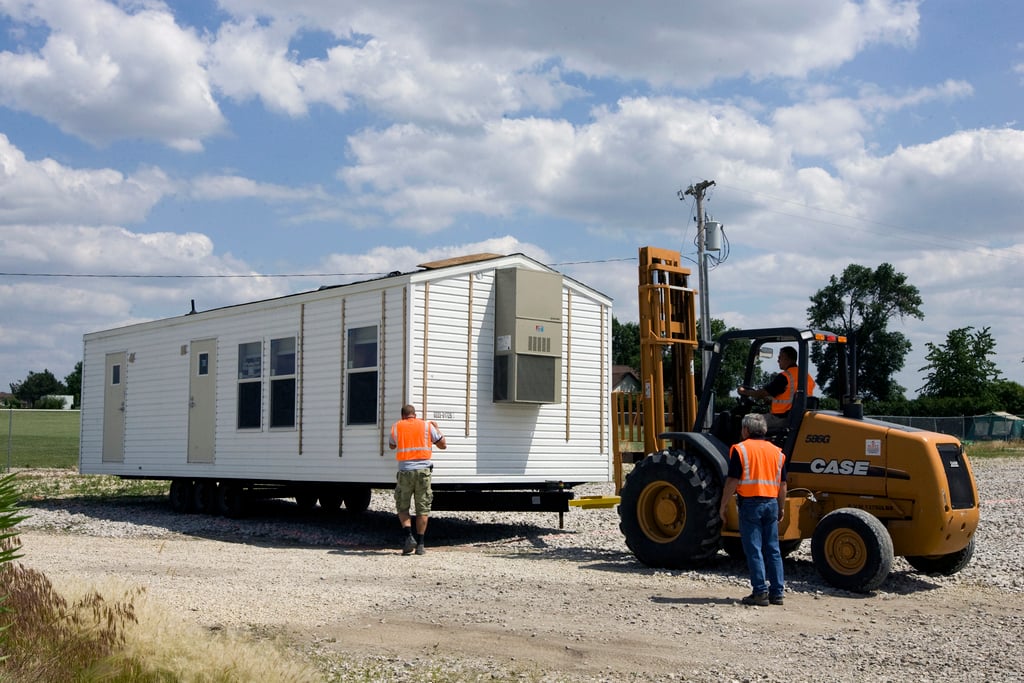Mobile and tiny homes are popular now as people seek simplicity and financial liberation through minimalistic living.

First-time mobile and tiny home buyers may wonder:
“Can I install my own shower in a mobile or tiny home?”
Or
“How big are tiny house bathrooms?”
Understanding the basics of tiny house plumbing, bathroom, and shower types is important to determine if this type of home can work for you.
In this article, we explore the bathroom shower options available to mobile and tiny homeowners.
How do Mobile Home Showers Work?
Mobile home showers work similarly to stick-built homes, with a few differences.
Both types of homes have supply lines to carry water into the bathroom and drain lines to carry out gray water.
The difference lies in the layout and size of the pipes.
Mobile homes mostly use PEX pipes, which are sturdier than plastic and copper pipes. Mobile home shower plumbing follows a different code (HUD code) from site-built home showers.

How do Tiny Home Showers Work?
Connecting to an On-grid Mains Water Supply
Connecting to a main water supply line is the easiest way to get water into your tiny home shower.
This is similar to how site-built and mobile homes manage their water supply. This option is only available when you are in a built-up area and can access a water supply line.
You can dispose of your gray water by channeling it to the main disposal line through a drainage point.
Connecting Via Water Hose
Sometimes you can’t access the main supply but can still access plumbing with a water supply from which you can source water for your tiny house shower.
You can connect a water hose to a tap or spigot to get a water supply to your mobile tiny home.
This is most convenient for tiny houses on wheels, moving from one place to another. You can also store water to use later.
Storing Your Shower Water (Off-Grid Shower System)
Living off-grid takes away the luxury of connecting to an external water supply. You must source, store, and pump water into your tiny home shower. You can get water from different sources, including:
Rainwater Harvesting
This is one of the most convenient water sources for tiny house showers for people living off-grid. Check with your jurisdiction for permission to collect rainwater. You can collect and store rainwater from your roof’s runoff. You can also construct an extra catchment to harvest more water.
Ensure you have enough storage to cover you when the rain stops. You can store water in barrels and tanks inside and outside your house.
Wells and Natural Springs
Again, as long as you have permission to use the water you find in springs and wells, you can use it in your shower. You can use containers to fetch water from the source to your house or pump the water into your storage if you can get close enough to the source.
Other sources
If you find other clean water sources, you can collect, store, and use it in your shower. Again, you can fill up containers and transport them back to your tiny home or pump the water into your in-house storage.

Whichever off-grid water supply you choose, you will have to pump the water to attain considerable shower pressure.
While a storage tank and pump give you the same shower experience as an on-grid shower, it has its downsides.
The storage tanks take up space and add considerable weight to your tiny house. The pump also comes with noise and vibration.
Storage tanks and pumps are not very aesthetically pleasing. You can conceal your storage tanks under kitchen cabinets and cover your pumps to reduce noise.
Tiny House Gravity-Fed Showers
Gravity-fed showers address the pressure problem, eliminating the need for pumps. All you need is an overhead tank to store your shower water.
One of the advantages of a gravity-fed shower in your tiny home is energy conservation. To achieve comfortable shower water pressure, place your overhead storage at least one meter above the shower head.
Connecting an electric shower head to your overhead tank outlet will also increase your shower water pressure.
Shower Water Disposal for Off-Grid Tiny Houses
Tiny house showers produce gray water, which is easier to dispose of than black water.
However, you cannot dump gray water anyhow. Check the local jurisdiction’s gray water disposal guidelines.
The easiest off-grid gray water disposal method is putting it back into the ground. But consider how releasing the water into the ground affects your tiny home. Releasing the water too close to your house may saturate the ground on which it sits, causing stability problems. Consider creating a proper soak pit away from your house.
In some areas, you must take your gray water to a dump station, where they treat it before pumping it back into the ground.
Tiny House Outdoor Showers
Outdoor showers are probably the least common shower solutions for tiny houses. However, it is a practical option if you live off-grid and do not plan to move your tiny home soon. You can pair this with overhead storage for an outdoor gravity-fed shower experience.
The biggest advantage of this type of shower is that it takes up no space in your tiny house. It also does not involve any plumbing inside or around your house.
Can I Install my Shower in My Mobile or Tiny Home?
Yes! You can install or change the shower in your mobile or tiny home to your preferences. Many tiny homeowners customize their bathrooms to maximize the small available space.
Some of the modifications you can make include:
- Replace swinging shower doors with sliding doors.
- Install doorless showers with shower curtains.
- Installing floating bathroom vanities and shelving units to replace shower cabinets.
- Replacing overhead showers with handheld showers.
What Is The Best Type of shower for a Mobile or Tiny home?
The best type of shower for a mobile or tiny home largely depends on the owner’s preferences. However, the best shower is the one that adapts best to the available bathroom space.
A slider rail kit or handheld shower is an excellent choice. These have a detachable shower head, which you can remove from the wall bracket for flexibility.
What is the Cheapest Shower for Tiny and Mobile Homes?
The cheapest shower option will vary from one tiny house to another depending on water availability, space, and the owner’s preferences. A basic shower stall kit is one of the ways to save money on a tiny house shower. These kits include a shower pan, walls, and a door or curtain. They come in various sizes and shapes, including curved and keyhole space-saver enclosures.
A DIY shower unit is another way to save money on your mobile home shower. You can put together a basic shower unit with basic construction skills. A DIY unit will cost less than a prefabricated shower unit. You will, however, invest more time and labor to achieve a working unit.
When considering the cheapest shower option, it’s essential to factor in the upfront cost, durability, functionality, and ease of maintenance. Additionally, consider any necessary plumbing modifications or upgrades required to install the shower, as these can affect the overall cost.
Back to TinyRoam.com!



